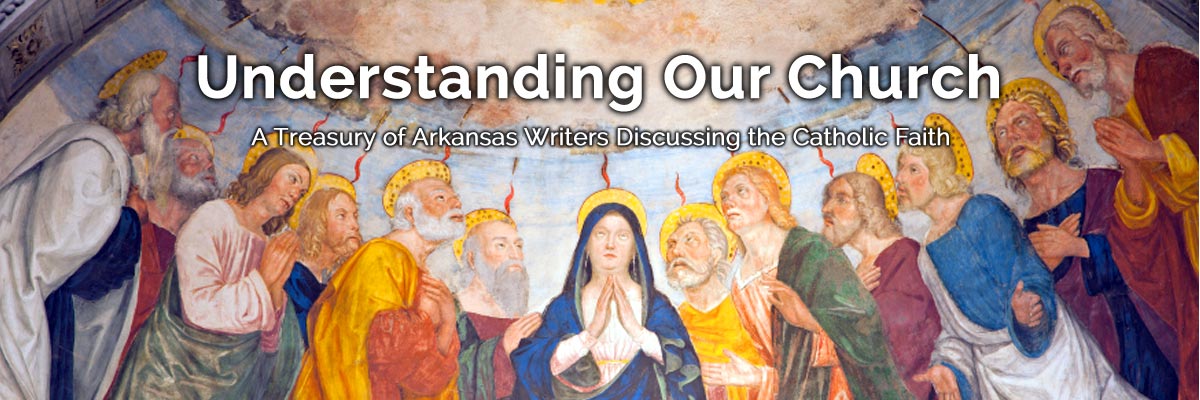Official Website of the
Catholic Diocese of Little Rock
Vatican II exposed Catholics to greater quantity, variety of Scripture
Published: February 18, 2016
By Deacon Mike Cumnock
St. Mary Church, Batesville / St. Cecilia Church, Newport
During this Lenten season the Church, through the Liturgy of the Word, unites itself with the mystery of Jesus in the desert. (Catechism of the Catholic Church, no. 540)
On the second Sunday of Lent each year, we move from Jesus’ retreat to the desert and temptation to the glory shown in his Transfiguration.
In this year’s readings, Cycle C, we hear the story taken from St. Luke’s Gospel. Last year, Cycle B, we heard from St. Mark, and in Cycle A in 2014, St. Matthew’s Gospel was proclaimed, with the evangelists each writing for their specific audience.
During my lifetime, I have seen a wonderful expansion in, and hunger for, sacred Scripture. As participants in the Liturgy of the Word, we are the beneficiaries of an elaborate effort that grew out of the Second Vatican Council to expose Catholics to a greater quantity and variety of Scripture in addition to those included in the Mass readings themselves.
Through our exposure to all of them, we are able to see a multi-faceted portrait of Jesus. Each of the disciples was busy preaching the resurrected Jesus long before the need to write the stories down seemed necessary.
They were busy living and proclaiming the Good News, which is what we are called to do. To give us an even fuller picture, each year’s Gospel is accompanied by its own Old Testament and New Testament readings chosen by the Church.
During my lifetime, I have seen a wonderful expansion in, and hunger for, sacred Scripture. As participants in the Liturgy of the Word, we are the beneficiaries of an elaborate effort that grew out of the Second Vatican Council to expose Catholics to a greater quantity and variety of Scripture in addition to those included in the Mass readings themselves.
Both the Liturgy of the Word and the Liturgy of the Eucharist are intended to feed and enlighten the people of God. “While he was with them, at table, he took bread, said the blessing, broke it and gave it to them. With that their eyes were opened and they recognized him.” (Luke 24:30-31)
Jesus was a great preacher and teacher, and his ability to open Scripture up to his hearers was legendary. “… they said to each other, were not our hearts burning (within us) while he spoke to us along the way and opened the scriptures to us?” (Luke 24: 32)
The bishops assembled at Vatican II declared: “The treasures of the Bible are to be opened up more lavishly so that a richer fare may be provided for the faithful at the table of God’s word. In this way the more significant parts of sacred Scripture will be read to the people over a fixed number of years.” (Sacrosanctum Concilium, no. 51). That “fixed” number was later determined to be three years for Sundays and two years for weekdays.
Before Vatican ll, each Mass included only two biblical readings: The Epistle taken from a New Testament letter and a Gospel reading. Readings from the Old Testament were never used on Sundays but only at the Easter Vigil, vigil of Pentecost, the feast of the Epiphany and its cctave, during Holy Week, and on some weekdays.
Since Vatican ll, Masses on Sundays and major feasts include three biblical readings in a three-year cycle. The first reading is usually taken from the Old Testament except during the Easter season, when the first reading is from the Acts of the Apostles, giving us stories from the early Christian Church.
The Old Testament reading is normally thematically related to the Gospel reading for that Mass. Weekday Masses have a two-year cycle and only have two readings, the first taken from either the Old Testament or the New Testament.
The expansion of the Scripture readings growing out of Vatican ll has added more than 3,000 verses from the Old Testament to our liturgy and more than 4,300 verses from the New Testament. We as Catholics become more united with Jesus through both Word and Eucharist.




